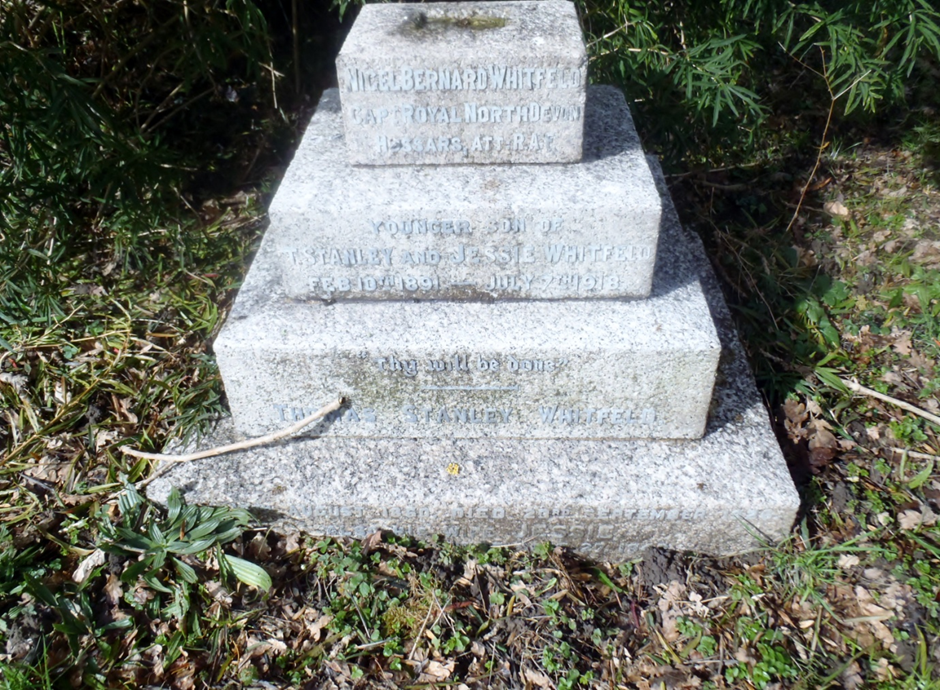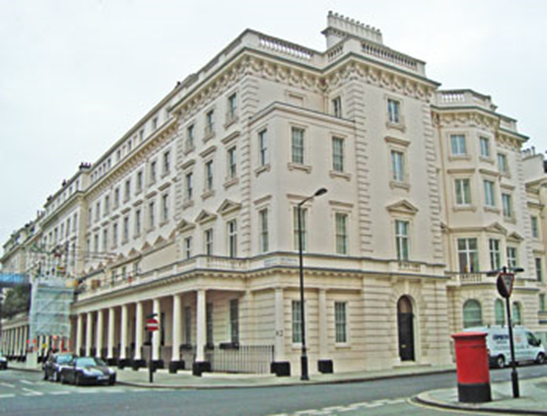NIGEL BERNARD WHITFIELD
Captain, 2/1st Royal North Devon (Hussars). Attached Royal Flying Corps
Died 7 July 1918 in the RFC hospital, Eaton Square, London,
from wounds sustained in a flying accident. He was aged 27.
Buried in Forest Row Cemetery

Nigel Bernard Whitfield's gravestone in Forest Row cemetery
Nigel Bernard Whitfield was born in Eastbourne in 1891. In the 1911 census he was living in Ashdown Forest at the Roebuck, Wych Cross, where he was listed as a student. His father, Thomas Stanley Whitfield, was a banker with Barclays Bank. His mother's name was Jessie. The family were well off and had five servants.
He originally enlisted as a private in the 2/1st Royal North Devon (Hussars), North Somerset Yeomanry, Regimental Number 680, and was promoted to Lieutenant. His medal record mentions that he was discharged to a commission on 17 April 1915.
Nigel Whitfield's cousin, Geo Grafton Currey, was also living at the Roebuck in 1911. He was aged 19 and his occupation was bank clerk. A captain in the Yorkshire Regiment, he was killed at Salt Lake, Gallipoli on 22 August 1915.
Nigel Bernard Whitfield died with the rank of Captain. In his will he left £331 2s. to his father. His residence was listed as the Garden House in Forest Row.
The inscription on his gravestone in Forest Row cemetery reads:
"1918 Captain Nigel B Whitfield, son of the 1906 Captain, T Stanley Whitfield, of the Roebuck, Wych Cross. He played off 6 and won the Caterham Cup in 1913. He enlisted in the Somerset Yeomanry, part of the Royal North Devon Regiment, and was then attached to the RAF. Shortly after his engagement to Gladys Clark, of Queenborough Terrace, London was announced in Flight magazine on 11th June 1918, he was killed in a flying accident."
Captain Whitfield died in the Royal Flying Corps Hospital in Eaton Square, London SW1, on 7 July 1918 after a flying accident. The third Royal Flying Corps Hospital opened at No. 82 Eaton Square in 1917. It had 30 beds and, like its sister hospital in Bryanston Square, was affiliated to Queen Alexandra's Military Hospital in Millbank. The types of injuries sustained by airmen could be serious and complex. Apart from gunshot wounds during aerial combat or from ground fire, they could suffer multiple fractures or burns on crash landing. The Royal Flying Corps hospitals were supported by public subscription from around the Empire.

The building on the corner of Eaton Square and Lyall Street, London, once occupied by the Royal Flying Corps Hospital
Commemorated on the Forest Row war memorial.
Carol O'Driscoll
17 May 2018

